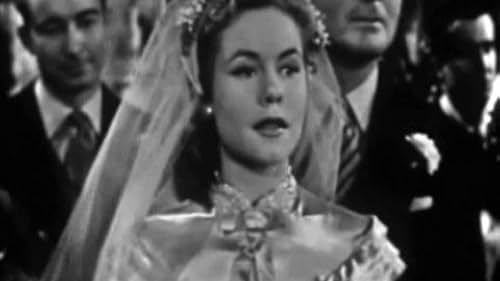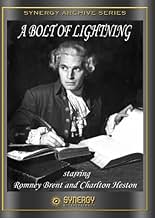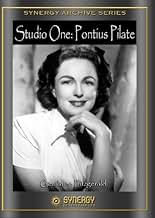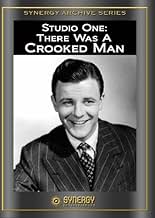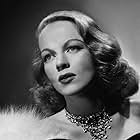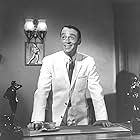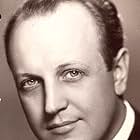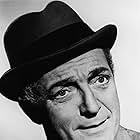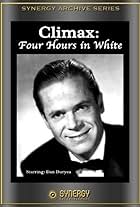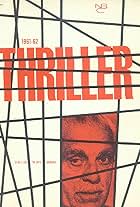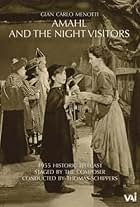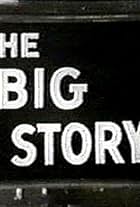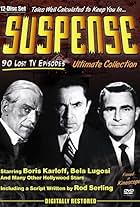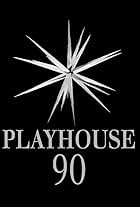Aggiungi una trama nella tua linguaA pinnacle of the Golden Age of Television, "Studio One" presented a wide range of memorable dramas and received eighteen Emmy nominations and five wins during its prestigious nine-year run ... Leggi tuttoA pinnacle of the Golden Age of Television, "Studio One" presented a wide range of memorable dramas and received eighteen Emmy nominations and five wins during its prestigious nine-year run on CBS.A pinnacle of the Golden Age of Television, "Studio One" presented a wide range of memorable dramas and received eighteen Emmy nominations and five wins during its prestigious nine-year run on CBS.
- Vincitore di 5 Primetime Emmy
- 7 vittorie e 17 candidature totali
Sfoglia gli episodi
Trama
Lo sapevi?
- QuizFor many years, only the first half of the kinescope of the live 1954 television version of "12 Angry Men" (shown as an episode of this series, and upon which the movie version (La parola ai giurati (1957)) was based) was thought to survive, and had been in the possession of the Museum of Television & Radio since 1976. In 2003, a complete 16mm kinescope was discovered in the collection of Samuel Liebowitz (former defense attorney and judge) and was also acquired by the museum.
- ConnessioniFeatured in Television: Play Power (1985)
Recensione in evidenza
I've always wanted to see the original, 1954 TV production of "12 Angry Men". The 1957 starring Henry Fonda is one of my all-time favorites and I love comparing movie versions of famous dramas to the original TV versions. When the Archive of American Television issued their Studio One Anthology which included the original version of "12 Angry Men", I had to have it. I wound up watching all 17 presentations, which cover the glory era of Studio One, which, with Playhouse 90, is one of the two most famous of the live TV anthology shows that, with the live variety shows, constituted the "Golden Age of TV", which reigned before the networks deserted New York for the west coast and filmed series with rigid formats.
Watching 17 Studio Ones in 17 nights was an interesting experience, different of course then watching it once a week and watching these particular episodes over 8 years. The effect was slightly depressing while at the same time being enlightening. Part of the reason was that I was watching kinescopes, which, even when in relatively good condition, look a bit like dream sequences, fuzzy and dark. And 16 of the 17 episodes are dramas, one an opera, (a genre which I always find kind of dire). Afterwards I had an enormous desire to watch an episode of Hawaii Five-0, which, while it's also decades old, is shot on film out of doors and in the sun.
We tend to think of the anthology shows of this era in terms of "Marty", "Requiem for a Heavyweight" and "12 Angry Men". Every week a classic. But it wasn't like that. The live dramas of the Golden Age had the advantage of being open-ended: you could write about what you wanted to, so long as you kept it clean and danced around the political mores of the times. But they also were hastily done, cheap, and were shot entirely in a studio, (Studio One's was in Grand Central Station, no less), and lacked the "floor" episodic TV had, even if they also lacked its ceiling. The worst Hawaii Five-0 is probably better than the worst Studio One, even if the best Studio One goes beyond anything Hawaii Five-0 could do. This is a sample of some of the show's best work but many of the 17 plays are nothing exceptional.
The very first Studio One, (on TV, anyway: it had been on radio for a year), was "The Storm", on 11/7/48. It was redone 10/17/49 and that's the version we see here. It's just a "woman in distress" story, along the lines of "Suspicion", as an insecure young woman marries a "nice guy" and finds out he isn't. Other than its historical value, it isn't all that interesting. The oldest kinescope here is "The Medium", (12/12/48- the third ever Studio One), a Menotti opera chiefly interesting, (to me, anyway), because the producer of the stage production upon which it's based was Ephraim Zimbalist Jr., a decade before he played Stu Bailey on "77 Sunset Strip"
The best thing about these old shows is the faces- the many recognizable actors, most of them early in their careers, who appear. Jack Lemmon, in perhaps his first appearance before the cameras, (6/22/49), plays the sort of nice young man, (an aspiring songwriter), that he would become famous playing in the next decade in "June Moon". Eva Marie Saint, also an early appearance, plays the girl he falls for. Edward Andrews, a comical or occasionally menacing businessman in 60's films and TV shows, plays a more established songwriter. David Opatoshu, whose stock in trade was intellectual leaders, (see Star Trek's "A Taste of Armageddon"), here plays a window washer who anticipates Ed Norton of The Honeymooners. But the play itself is nothing special.
Charlton Heston first made a name for himself on this show and appears as Heathcliffe is a reasonable adaptation of "Wuthering Heights". The problem with such adaptations is that they had to be shoehorned into an hour and cut for Betty Furness's commercials. We get the beginning of Julius Caesar, in which Alfred Ryder does Mark Anthony's speech without Marlon Brando's passion but with a wry intelligence that was probably closer to what Shakespeare intended. It's fun to see perennial TV bad guys like Ryder and Bruce Gordon, who plays a Centurion, in non-bad guy classic roles. Most of the cast of this one turned up on "Perry Mason" over the years, multiple times.
I liked Cyril Richard as Pontius Pilate in and Easter special from 1952. A 1953 version of 1984 with Eddie Albert and Lorne Greene is powerful, (but the most depressing of all). Greene's deep voice works as well for the head bad guy as it did for the head good guy on Bonanza- it could be as frightening as it was reassuring.
The one comedy is "Confessions of a Nervous Man" from 1953 with Art Carney playing George Axelrod in a story of what it was like to write a hit play, "The Seven year Itch", (he even drops the names of Bill Wilder and Marilyn Monroe, who were preparing the 1955 film version). Audiences of the day knew that Art Carney was capable of a lot more than playing Ed Norton but that's all anybody sees today.
The greatest legacy of the live anthologies was the opportunity they gave for talented young dramatists. Gore Vidal wrote "Dark Possession" (2/15/54), which examined split personality three years before "The Three Faces of Eve" and "Summer Pavilion" (5/2/55), an homage to Tennessee Williams. Rod Serling provided "The Strike", a powerful drama with a great performance by James Daly who has to order an air strike that will kill some of his own men. (It anticipates the Twilight Zone episode "The Purple Testament".) He also wrote the last one in the collection, "The Arena", (4/8/56), a drama of Congress that turns "Mr. Smith Goes to Washington" around: the veteran Senator turns out to be the good guy while the new guy wants to destroy him. It also anticipates Vidal's "The Best Man" in that the younger Senator, (Wendell Corey), is tempted to use McCarthy-like tactics against this rival but finally declines to do so.
But the writer who got the biggest reputation from Studio One is Reginald Rose, who became famous for "12 Angry Men" and for "The Defenders", the pilot of which was done on Studio One in 1957 (not included in this collection but I already had it: it's the one "Boston Legal" used because it featured William Shatner 50 years ago: the original is much better). He also wrote "The Remarkable Incident at Carson Corners" (1/11/54) and "An Almanac of Liberty" (11/8/54), both of which feature impromptu trials- the first by children and the second by some mysterious force that stops time. Both are artificial and preachy. Much better is "The Death and Life of Harry Benson" (5/31/54) with Skip Homeier as a soldier pretending to be a deceased buddy so he can have a family and "Dino" (1/2/56), which made Sal Mineo a star in a semi-autobiographical role that was also done as a movie the next year.
Ms. Furness's commercials are interesting if a bit jarring. Somehow the fact that she's doing them at the same time the dramas are being presented, with just a flat between them is a little disturbing, especially when we've just left a desolate Korean outpost like the one in "The Strike". A filmed commercial seems more distant and easier to tune out. The technology of those appliances Betty is hawking is not so different now than it was then and those refrigerators, ranges, washers and dryers look a lot more solidly built that the junk I've got in my kitchen now. Where can I get them?
Ultimate, the feeling one gets is of peering back into the mists of time. "The Medium" was broadcast 60 years ago. If the players in it could watch something that was 60 years old then, they'd be watching something from 1888. Jack Lemmon was not yet 24 when he acted in "June Moon" and died seven years ago at the age of 76. Elizabeth Montgomery appears in "Summer Pavilion" at age 22, young, talented and beautiful. She died 13 years ago at the age of 62. Eddie Albert, who lived to be age 99, co-stars with Norma Crane, who died at age 44. Virtually all the performers in these old kinescopes left us, many of them long ago.
But, thanks to the Archive of American Television, they are still with us.
(First posted to the IMDB message board in 2008)
Watching 17 Studio Ones in 17 nights was an interesting experience, different of course then watching it once a week and watching these particular episodes over 8 years. The effect was slightly depressing while at the same time being enlightening. Part of the reason was that I was watching kinescopes, which, even when in relatively good condition, look a bit like dream sequences, fuzzy and dark. And 16 of the 17 episodes are dramas, one an opera, (a genre which I always find kind of dire). Afterwards I had an enormous desire to watch an episode of Hawaii Five-0, which, while it's also decades old, is shot on film out of doors and in the sun.
We tend to think of the anthology shows of this era in terms of "Marty", "Requiem for a Heavyweight" and "12 Angry Men". Every week a classic. But it wasn't like that. The live dramas of the Golden Age had the advantage of being open-ended: you could write about what you wanted to, so long as you kept it clean and danced around the political mores of the times. But they also were hastily done, cheap, and were shot entirely in a studio, (Studio One's was in Grand Central Station, no less), and lacked the "floor" episodic TV had, even if they also lacked its ceiling. The worst Hawaii Five-0 is probably better than the worst Studio One, even if the best Studio One goes beyond anything Hawaii Five-0 could do. This is a sample of some of the show's best work but many of the 17 plays are nothing exceptional.
The very first Studio One, (on TV, anyway: it had been on radio for a year), was "The Storm", on 11/7/48. It was redone 10/17/49 and that's the version we see here. It's just a "woman in distress" story, along the lines of "Suspicion", as an insecure young woman marries a "nice guy" and finds out he isn't. Other than its historical value, it isn't all that interesting. The oldest kinescope here is "The Medium", (12/12/48- the third ever Studio One), a Menotti opera chiefly interesting, (to me, anyway), because the producer of the stage production upon which it's based was Ephraim Zimbalist Jr., a decade before he played Stu Bailey on "77 Sunset Strip"
The best thing about these old shows is the faces- the many recognizable actors, most of them early in their careers, who appear. Jack Lemmon, in perhaps his first appearance before the cameras, (6/22/49), plays the sort of nice young man, (an aspiring songwriter), that he would become famous playing in the next decade in "June Moon". Eva Marie Saint, also an early appearance, plays the girl he falls for. Edward Andrews, a comical or occasionally menacing businessman in 60's films and TV shows, plays a more established songwriter. David Opatoshu, whose stock in trade was intellectual leaders, (see Star Trek's "A Taste of Armageddon"), here plays a window washer who anticipates Ed Norton of The Honeymooners. But the play itself is nothing special.
Charlton Heston first made a name for himself on this show and appears as Heathcliffe is a reasonable adaptation of "Wuthering Heights". The problem with such adaptations is that they had to be shoehorned into an hour and cut for Betty Furness's commercials. We get the beginning of Julius Caesar, in which Alfred Ryder does Mark Anthony's speech without Marlon Brando's passion but with a wry intelligence that was probably closer to what Shakespeare intended. It's fun to see perennial TV bad guys like Ryder and Bruce Gordon, who plays a Centurion, in non-bad guy classic roles. Most of the cast of this one turned up on "Perry Mason" over the years, multiple times.
I liked Cyril Richard as Pontius Pilate in and Easter special from 1952. A 1953 version of 1984 with Eddie Albert and Lorne Greene is powerful, (but the most depressing of all). Greene's deep voice works as well for the head bad guy as it did for the head good guy on Bonanza- it could be as frightening as it was reassuring.
The one comedy is "Confessions of a Nervous Man" from 1953 with Art Carney playing George Axelrod in a story of what it was like to write a hit play, "The Seven year Itch", (he even drops the names of Bill Wilder and Marilyn Monroe, who were preparing the 1955 film version). Audiences of the day knew that Art Carney was capable of a lot more than playing Ed Norton but that's all anybody sees today.
The greatest legacy of the live anthologies was the opportunity they gave for talented young dramatists. Gore Vidal wrote "Dark Possession" (2/15/54), which examined split personality three years before "The Three Faces of Eve" and "Summer Pavilion" (5/2/55), an homage to Tennessee Williams. Rod Serling provided "The Strike", a powerful drama with a great performance by James Daly who has to order an air strike that will kill some of his own men. (It anticipates the Twilight Zone episode "The Purple Testament".) He also wrote the last one in the collection, "The Arena", (4/8/56), a drama of Congress that turns "Mr. Smith Goes to Washington" around: the veteran Senator turns out to be the good guy while the new guy wants to destroy him. It also anticipates Vidal's "The Best Man" in that the younger Senator, (Wendell Corey), is tempted to use McCarthy-like tactics against this rival but finally declines to do so.
But the writer who got the biggest reputation from Studio One is Reginald Rose, who became famous for "12 Angry Men" and for "The Defenders", the pilot of which was done on Studio One in 1957 (not included in this collection but I already had it: it's the one "Boston Legal" used because it featured William Shatner 50 years ago: the original is much better). He also wrote "The Remarkable Incident at Carson Corners" (1/11/54) and "An Almanac of Liberty" (11/8/54), both of which feature impromptu trials- the first by children and the second by some mysterious force that stops time. Both are artificial and preachy. Much better is "The Death and Life of Harry Benson" (5/31/54) with Skip Homeier as a soldier pretending to be a deceased buddy so he can have a family and "Dino" (1/2/56), which made Sal Mineo a star in a semi-autobiographical role that was also done as a movie the next year.
Ms. Furness's commercials are interesting if a bit jarring. Somehow the fact that she's doing them at the same time the dramas are being presented, with just a flat between them is a little disturbing, especially when we've just left a desolate Korean outpost like the one in "The Strike". A filmed commercial seems more distant and easier to tune out. The technology of those appliances Betty is hawking is not so different now than it was then and those refrigerators, ranges, washers and dryers look a lot more solidly built that the junk I've got in my kitchen now. Where can I get them?
Ultimate, the feeling one gets is of peering back into the mists of time. "The Medium" was broadcast 60 years ago. If the players in it could watch something that was 60 years old then, they'd be watching something from 1888. Jack Lemmon was not yet 24 when he acted in "June Moon" and died seven years ago at the age of 76. Elizabeth Montgomery appears in "Summer Pavilion" at age 22, young, talented and beautiful. She died 13 years ago at the age of 62. Eddie Albert, who lived to be age 99, co-stars with Norma Crane, who died at age 44. Virtually all the performers in these old kinescopes left us, many of them long ago.
But, thanks to the Archive of American Television, they are still with us.
(First posted to the IMDB message board in 2008)
I più visti
Accedi per valutare e creare un elenco di titoli salvati per ottenere consigli personalizzati
Dettagli
- Data di uscita
- Paese di origine
- Lingua
- Celebre anche come
- Studio One in Hollywood
- Azienda produttrice
- Vedi altri crediti dell’azienda su IMDbPro
- Tempo di esecuzione1 ora
- Colore
- Mix di suoni
- Proporzioni
- 1.33 : 1
Contribuisci a questa pagina
Suggerisci una modifica o aggiungi i contenuti mancanti

Divario superiore
By what name was Studio One (1948) officially released in India in English?
Rispondi
